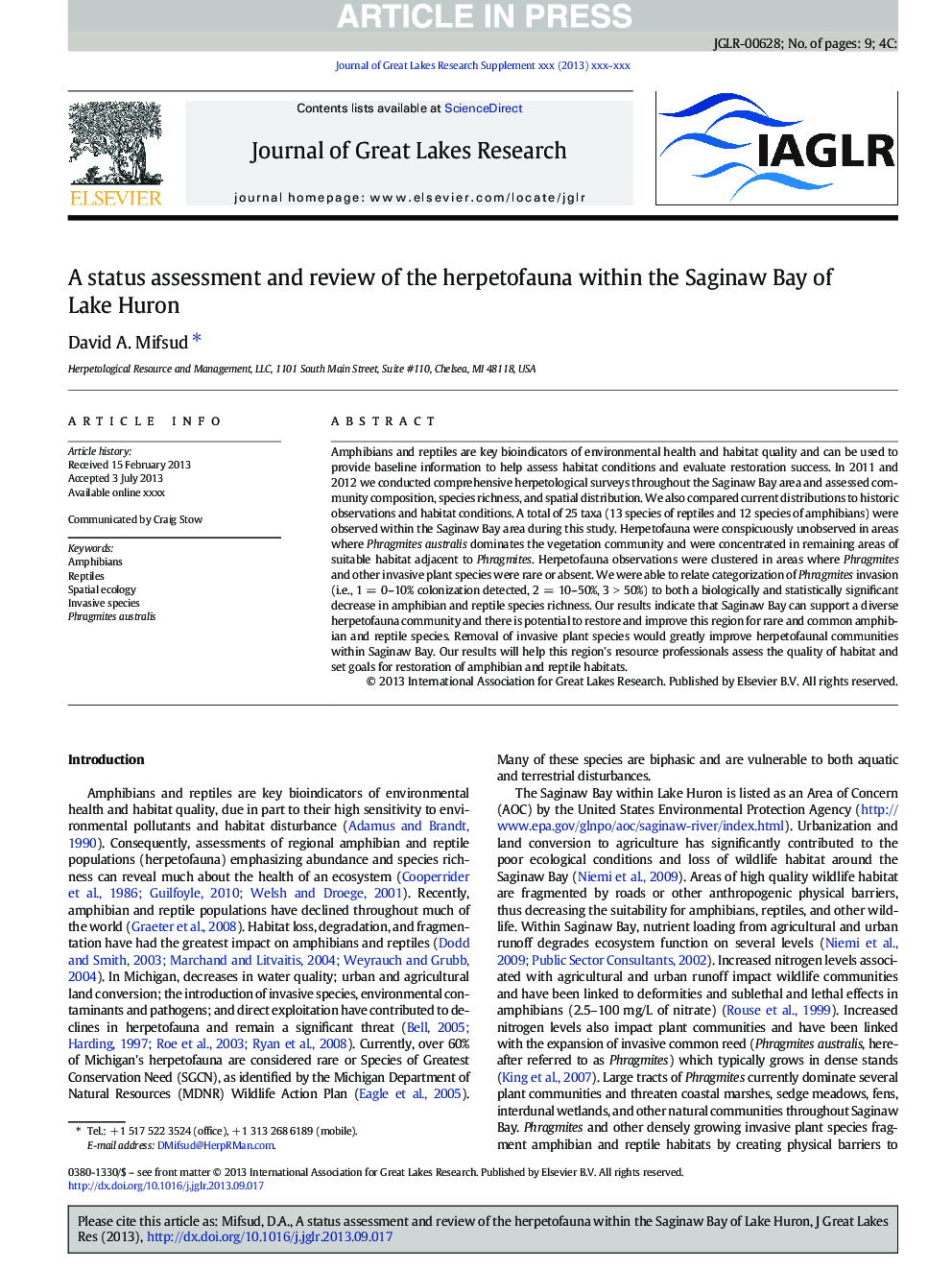| Article ID | Journal | Published Year | Pages | File Type |
|---|---|---|---|---|
| 4398394 | Journal of Great Lakes Research | 2014 | 9 Pages |
Abstract
Amphibians and reptiles are key bioindicators of environmental health and habitat quality and can be used to provide baseline information to help assess habitat conditions and evaluate restoration success. In 2011 and 2012 we conducted comprehensive herpetological surveys throughout the Saginaw Bay area and assessed community composition, species richness, and spatial distribution. We also compared current distributions to historic observations and habitat conditions. A total of 25 taxa (13 species of reptiles and 12 species of amphibians) were observed within the Saginaw Bay area during this study. Herpetofauna were conspicuously unobserved in areas where Phragmites australis dominates the vegetation community and were concentrated in remaining areas of suitable habitat adjacent to Phragmites. Herpetofauna observations were clustered in areas where Phragmites and other invasive plant species were rare or absent. We were able to relate categorization of Phragmites invasion (i.e., 1Â =Â 0-10% colonization detected, 2Â =Â 10-50%, 3Â >Â 50%) to both a biologically and statistically significant decrease in amphibian and reptile species richness. Our results indicate that Saginaw Bay can support a diverse herpetofauna community and there is potential to restore and improve this region for rare and common amphibian and reptile species. Removal of invasive plant species would greatly improve herpetofaunal communities within Saginaw Bay. Our results will help this region's resource professionals assess the quality of habitat and set goals for restoration of amphibian and reptile habitats.
Related Topics
Physical Sciences and Engineering
Earth and Planetary Sciences
Earth and Planetary Sciences (General)
Authors
David A. Mifsud,
